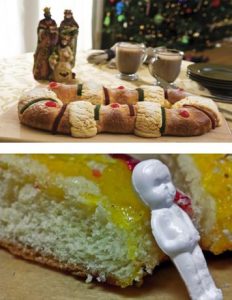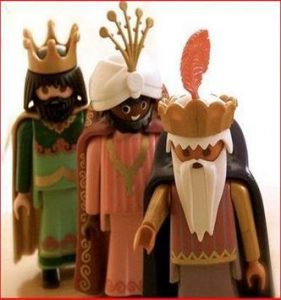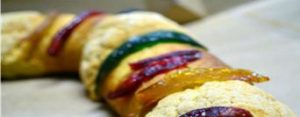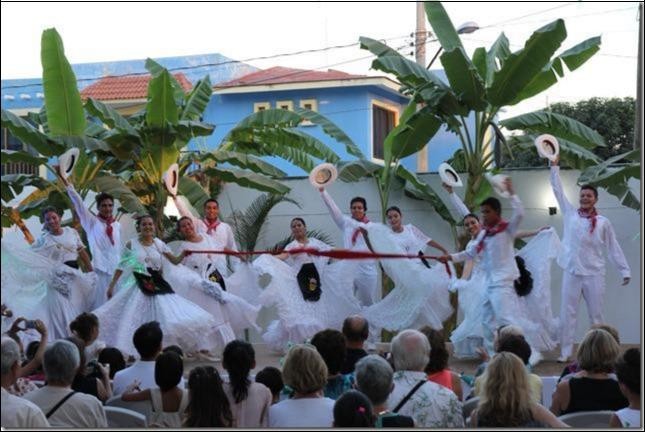By Ken Waldie from the January 2016 Edition

I guess I am considered to be a typical Canadian. I work hard, enjoy my summers, deal with cold weather and rain and, while I do enjoy snow and winter sports, I always celebrate the first day I can go outside without a coat. And in the dead of winter, we escape to what has become our second home, the place where shorts and T shirts are mandatory Manzanillo, Mexico.
Christmas, for most of us in the north, comes with a crescendo of activity until December 24th when we stop. We pause for a day or two to enjoy our family and friends, share greetings, exchange gifts and eat turkey. On Christmas Eve I texted my Christmas greetings to family and friends. It felt sinful. What happened to Christmas cards?
We catch only a breath, and Christmas is done boom! We’re back to the grind, out to take advantage of  the Boxing Day sales (OMG!! Now it’s Boxing Week). Trees and decorations stowed away; turkey dinner becomes sandwiches and soup. I blinked; it’s over. We’re on to New Years and back to work.
the Boxing Day sales (OMG!! Now it’s Boxing Week). Trees and decorations stowed away; turkey dinner becomes sandwiches and soup. I blinked; it’s over. We’re on to New Years and back to work.
In contrast, there is sweetness in the way a Mexican Christmas unfolds. It’s like a rose coming to bloom, although it’s jokingly referred to by Mexicans, as well as by those of us in the colder climes, as the Guadalupe- Reyes marathon, where liver and digestion are sorely tested. Christmas in Mexico is a song well sung, where faith, family and friends come together to enjoy a whole season of festive celebrations, parties, parades and spiritual renewal.
It all starts December 12th with the celebration of the Virgin Guadalupe. All Mexico, including tens of thousands of people who make pilgrimage to the Basilica of Guadalupe in Mexico City, celebrate with mass, family gatherings, parades and fireworks. From December 16th to 24th there are nightly parades and gatherings called Posadas, (Posada literally means inn or accommodation) in remembrance of Joseph and Mary’s search for a place to stay in Bethlehem. On Christmas Eve, the final Posada leads to the local church for mass, after which there are more fireworks and celebrations into the night.
 But there’s more; today, the modern symbol of Santa and a few small gifts have found their way under Christmas trees on the 25th. The 28th is a day of practical jokes called Holy Innocents’ Day. New Year’s Eve continues the celebrations, but the “big tamale” comes on January 6th, the height of Christmas celebrations is known as El Dia de Reyes (“ray-yays”).
But there’s more; today, the modern symbol of Santa and a few small gifts have found their way under Christmas trees on the 25th. The 28th is a day of practical jokes called Holy Innocents’ Day. New Year’s Eve continues the celebrations, but the “big tamale” comes on January 6th, the height of Christmas celebrations is known as El Dia de Reyes (“ray-yays”).
Three Kings’ Day, also known as Epiphany, is a celebration of the Magi’s arrival in Bethlehem, a celebration that extends back to the second century. The three kings, Caspar, Balthazar, and Melchior traveled from far lands to seek out and honor the baby Jesus with gifts of gold, frankincense and myrrh.
Frankincense and myrrh, in case you don’t know, are resins from two distinct African trees. Today they are used as essential oils and incense for health and healing. I’m sure Mary appreciated the myrrh especially because it’s listed as a treatment for diaper rash. Seriously, I’m not joking… diaper rash.
El Dia de Reyes, Three Kings Day is a huge nation-wide celebration that starts on the evening of January 5th when children leave notes to the Reyes by the window or door, asking for gifts and explaining why they deserve them. In the night, the kings secretly leave gifts for the children to find when they awake, for they are the true givers of gifts in Latin America. El Dia de Reyes is when kids get “the really good stuff”. It’s the main day that gifts are given.
During the day and evening family and friends gather for chocolate caliente, (homemade cinnamon-infused, hot chocolate stirred with a stick made for just this purpose that creates foam) and a very special dessert called, Rosca de Reyes, or Kings’ Bread.
Rosca de Reyes is a sweet bread, quite large in size, round or oval-shaped, to represent the Kings’ crowns. It’s laden with candied cactus, fruit and decoration symbolic of jewels and decorations found on a crown. Inside each Rosca are hidden several plastic figures that represent the baby Jesus when the family was forced to flee and hide from King Herod.
It’s laden with candied cactus, fruit and decoration symbolic of jewels and decorations found on a crown. Inside each Rosca are hidden several plastic figures that represent the baby Jesus when the family was forced to flee and hide from King Herod.
Every guest gets a piece of Rosca de Reyes and, if they should find a baby Jesus figure in their piece, it’s considered especially lucky. Lucky also because those that get the figurine are the chosen ones who will make tamales and host the closing Christmas celebration of Dia de la Candelaria on February 2nd.
The whole of Mexico does not come to a grinding halt at Christmas, but it does slow down to take a breath from December 16th to January 7th. Schools, government offices and non essential businesses close. Tourism, however, is busy because many head for resorts such as Manzanillo to enjoy the holidays, not to mention those of us who travel south for that season. Yes, it is a wonderful time to celebrate, enjoy festivities with family and friends, and just relax… unless you work at a bakery, that is. Can you imagine hiding thousands on thousands of baby Jesus figurines and decorating endless Roscas de Reyes day and night? It would be more than this author could handle.
Download the full edition or view it online





You must be logged in to post a comment.